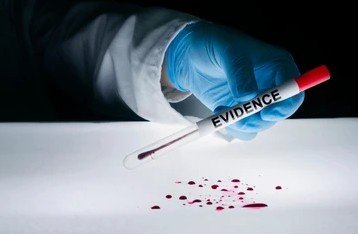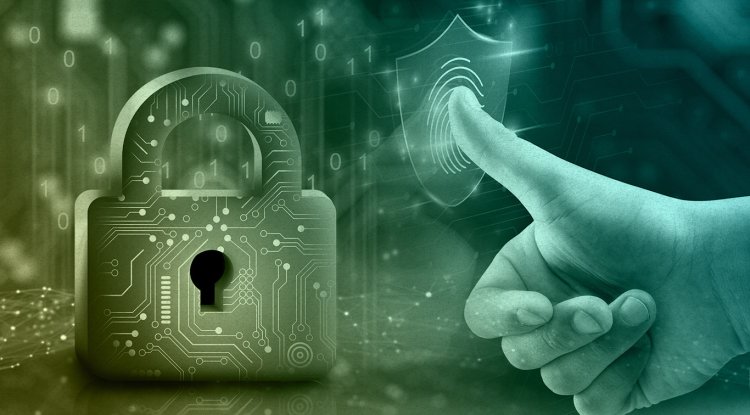Forensic Hematology: Blood and Plasma Analysis
Both humans and animals have blood, a specialized bodily fluid that carries vital elements required for survival. It is a component of the circulatory system and is frequently referred to as the "river of life" due to the fact that it carries waste materials, nutrition, hormones, and oxygen throughout the body.

BLOOD
Blood is a fluid connective tissue that consist of plasma, blood cells and platelets. It circulate throughout our body delivering oxygen and nutrient to various cells and tissues.
It make up 8% of our body weight an average adult possesses around 5-6 litres of blood.
Composition of Blood
Blood is made up of two main components:
-
Plasma (about 55%)
-
The liquid portion of blood.
-
Mostly water (90–92%), plus proteins, salts, glucose, hormones, and waste products.
-
Functions: transports nutrients, hormones, and waste, helps in clotting, and maintains pH balance.
-
-
Formed Elements (about 45%)
-
Red Blood Cells (RBCs / Erythrocytes) → Carry oxygen using hemoglobin.
-
White Blood Cells (WBCs / Leukocytes) → Fight infections and provide immunity.
-
Platelets (Thrombocytes) → Help in blood clotting and wound healing.
-
PLASMA
Plasma, also called blood plasma , the liquid portion of blood. Plasma serves as a transport medium for delivering nutrients to the cell of the various organ of the body and for transporting waste product derived from cellular metabolism to the kidneys, liver and lungs for excretion.
It is also a transport system for blood cells and it play a critical role in maintaining normal blood pressure. Plasma helps to distribute heat throughout the body and to maintain homeostatis, or biological stability, including acid - base balance in the body.
BLOOD ENZYMES
Red blood cells plasma membrane contain a number of enzymes.
- ATPases
- Anion transport protein
- Glyceraldehyde 3- phosphate dehydrogenase
- Protein kinase
- Adenylate cyclase
- Acetylcholinesterase
Most of them tightly bound to the membrane and are present in small amounts.
Bombay blood or HH blood group
The bombay blood group or HH blood group is a rare blood phenotype. First discovered in mumbai then called BOMBAY.
It was discovered in 1952 by Dr. V.M Bhende. THis blood phenotype is mostly found in india bangaladesh, pakistan and middle east region. The bombay blood group occurs in those individuals who have inherited two recessive stains of the H gene such individuals do not produce the H carbohydrate.
Collection preservation of blood stains ( EVIDENCE/SAMPLE)
BIOLOGICAL SAMPLE
From Forensic point of view Blood, seman, saliva, hair, urine, fibre, fecal material etc are considered as biological material ( Evidence). They are present at any means biological samples play an important role in analysis of crime. Biological sample establish relation with the victim or accused during commiting crime.
Sites of biological evidence
BLOOD - Considered as evidence
NATURE - Blood spot can be found red in colour
# On Movabable surface
Like Weapon, Glass, Paper, Cloth, Soil, Vehicle, Wood etc
# On Immovable surface
Dead body, Wall, Earth surface, Window etc.
# Any Article like
Water tab, hancky, towel, bed sheet, pollow, blanket, curtain, mat also examined at the time of collection at crime scene beacause criminal may encounter this article during committing crime.
Collection Methods
A. Dried Blood Stains
-
Use a sterile scalpel, blade, or forceps to scrape stains into a clean container.
-
Or use a moistened sterile cotton swab (distilled water/saline) to collect.
-
If blood is on an item (cloth, weapon, paper), collect the whole item if possible.
B. Wet/Fresh Blood
-
Absorb with a sterile cotton gauze or swab, then air dry.
-
Do not seal wet samples immediately (risk of fungal growth).
C. Blood from the Body
-
Collected by a qualified medical professional using sterile syringes or vacutainers.
-
For toxicology → usually 10–20 ml venous blood is collected.
-
Preservatives/anticoagulants are added:
-
EDTA (anticoagulant) → prevents clotting (for DNA profiling).
-
Sodium fluoride (NaF) → prevents fermentation of glucose (for alcohol/toxicology tests).
-
Tests for Blood Evidence
1. Presumptive Tests
First-level screening tests → quick, sensitive, but not 100% specific (can give false positives).
-
Benzidine Test (historical, not used now – carcinogenic)
-
Phenolphthalein (Kastle-Meyer Test)
-
Uses phenolphthalein + hydrogen peroxide.
-
Pink color → presence of blood (due to hemoglobin peroxidase activity).
-
-
Leucomalachite Green Test
-
Turns green/blue in presence of blood.
-
-
Hemastix (commercial strips)
-
Yellow → green color change if blood present.
-
-
Luminol Test
-
Chemiluminescence (blue glow in dark).
-
Very sensitive, detects old/cleaned stains.
-
-
Bluestar Test
-
Similar to luminol but more stable and brighter.
-
-
Tetramethylbenzidine (TMB) Test
-
Turns blue-green in presence of blood.
-
2. Confirmatory Tests
Prove that the stain is definitely blood.
-
Takayama Crystal Test (Hemochromogen Test)
-
Blood treated with pyridine + glucose → pink, feathery crystals form.
-
-
Teichmann Crystal Test (Hemin Test)
-
Blood + glacial acetic acid + halide → brown hemin crystals form.
-
-
Spectroscopic Examination
-
Hemoglobin has characteristic light absorption spectra.
-
3. Species Origin Tests
Determines if the blood is human or animal.
-
Precipitin Test (Immunological Test)
-
Antiserum against human proteins is added.
-
If human blood → visible precipitate forms.
-
-
Immunochromatographic Tests (Rapid kits)
-
Used in modern forensic labs for quick species determination.
-
4. DNA-Based Tests
Identifies whose blood it is.
-
DNA profiling (STR analysis, PCR methods)
-
Highly specific, used in criminal identification, paternity testing, missing persons.
Cases Where Blood Evidence is Found
1. Violent Crimes
-
Homicides (Murders)
-
Blood from victim due to stabbing, shooting, blunt force trauma, or strangulation.
-
Blood spatter patterns help reconstruct sequence of events.
-
-
Assaults / Fights
-
Blood from punches, cuts, or injuries caused by weapons.
-
2. Sexual Offences
-
Victim or suspect may have blood due to injuries during assault.
-
Mixed blood and semen stains often found on clothes or bedding.
3. Accidents
-
Road Traffic Accidents (RTA): blood from injured drivers, passengers, or pedestrians.
-
Railway / industrial accidents: body injuries lead to bloodstains at the scene.
4. Suicides
-
Blood from self-inflicted wounds (cut wrists, firearm injuries, hanging with injuries).
5. Domestic Violence / Child Abuse
-
Traces of blood on clothes, walls, or household items used as weapons.
6. Burglary / Theft
-
Offenders may cut themselves while breaking glass, doors, or windows → leave blood traces at crime scene.
7. Poisoning / Overdose Cases
-
Blood collected from the body is analyzed in forensic toxicology to detect drugs, alcohol, or poison.
8. Missing Persons / Identification
-
Blood samples (from relatives or personal belongings) are used for DNA profiling to match unidentified bodies.
Follow cyberdeepakyadav.com on
Facebook, Twitter, LinkedIn, Instagram, and YouTube
What's Your Reaction?






















